By Adrian Currie and Giulia Gionta
The NYC Department of City Planning (DCP) held a webinar in October to disclose surprise findings from the 2020 Census. The panel focused on the five boroughs and the tri-state area, breaking down the decade’s demographic shifts.
“Instead of the predicted sluggish growth, we saw truly robust growth all across the city but also surprises across the region,” said Senior Demographic Analyst Joel Alvarez to the online forum of more than 100 attendees.
The findings show that New York City outpaced the nation and other large cities in population growth over the 10-year span between Census counts. NYC was projected to have a growth rate of 1.3% for the 2020 Census count but grew by 7.7% instead, while the U.S. grew at a rate of 7.4%, much closer to its projection of 6.7%. Brooklyn grew at 9.2 percent, the fastest rate, adding an additional 231,374 people since 2010. It is the most populous borough with a population of 2,736,074 in 2020.
As of August 12, 2021, there are 23.5 million people in the region. New York City has the largest population of all U.S. cities at 8,804,190. Los Angeles, California, follows in second with 3,898,747 and Chicago, Illinois, in third with 2,746,388 people.
The Census is a housing based count and therefore it is only as accurate as the listed addresses. Congress implemented a program called Local Update of Census Addresses Operation (LUCA) in 1994 to help to provide more accurate counts through local government action. This enabled Alvarez and his team to document an additional 265,000 addresses that were either missed during the 2010 Census count or constructed some time afterwards. DCP staff “canvassed over 5,200 blocks across all five boroughs” to get the missing addresses added to the Census Bureau’s Master Address File (MAF).
Alvarez discussed the importance of a “good” count, citing the reapportionment of New York State representatives in Washington, the redistricting of local government representation, and increases in federal and local allocated funds, which are based on population size. The data is used for local planning like the Foundation for Emergency management, school construction, and public health responses to crisis, such as the COVID-19 pandemic.
The shift in demographics varied by race, with decreases in the white and Black populations and increases in the Asian and Hispanic populations. The tri-state metro has a population that is aging, especially in areas farthest from the center of the region. This aging pattern collectively has shown implications for the region’s future and its economic competitiveness.
New York City is more diverse than the country itself. New York City scores highest of the U.S.’s top 10 most populous cities, with a 76% diversity index. NYC’s percent distribution is: 28.3% Hispanic origin, 15.6% Asian, 20.2 Black%, 30.9% White. Meanwhile, the U.S.’s total diversity index number is 61%.



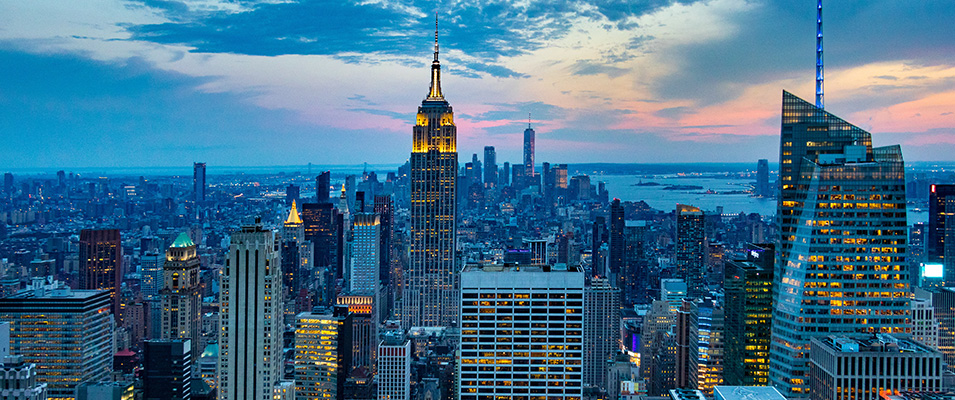
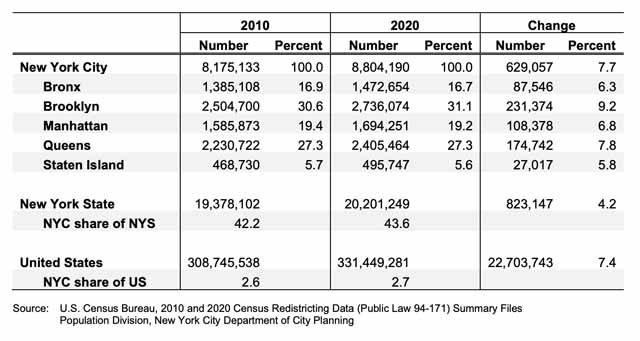
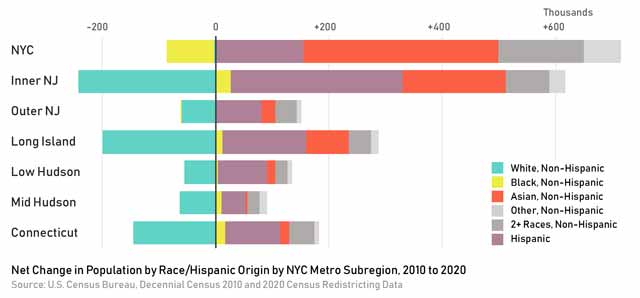
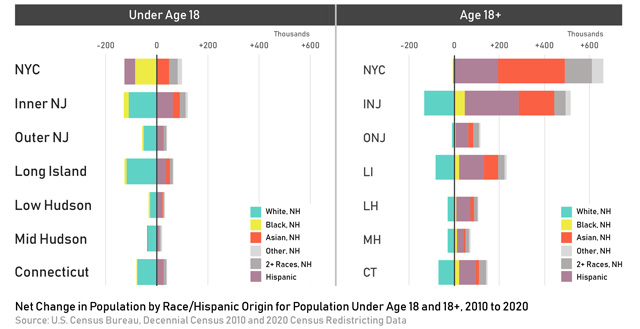

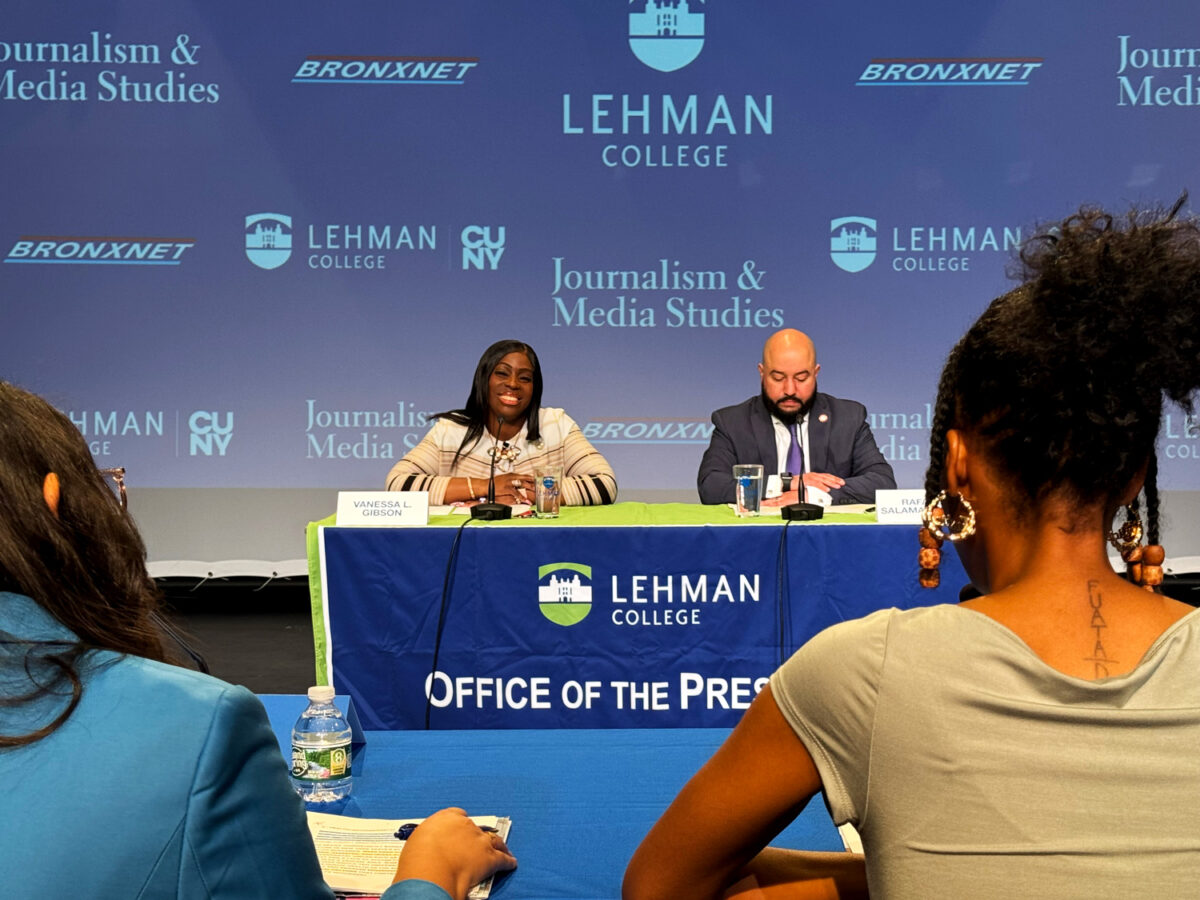

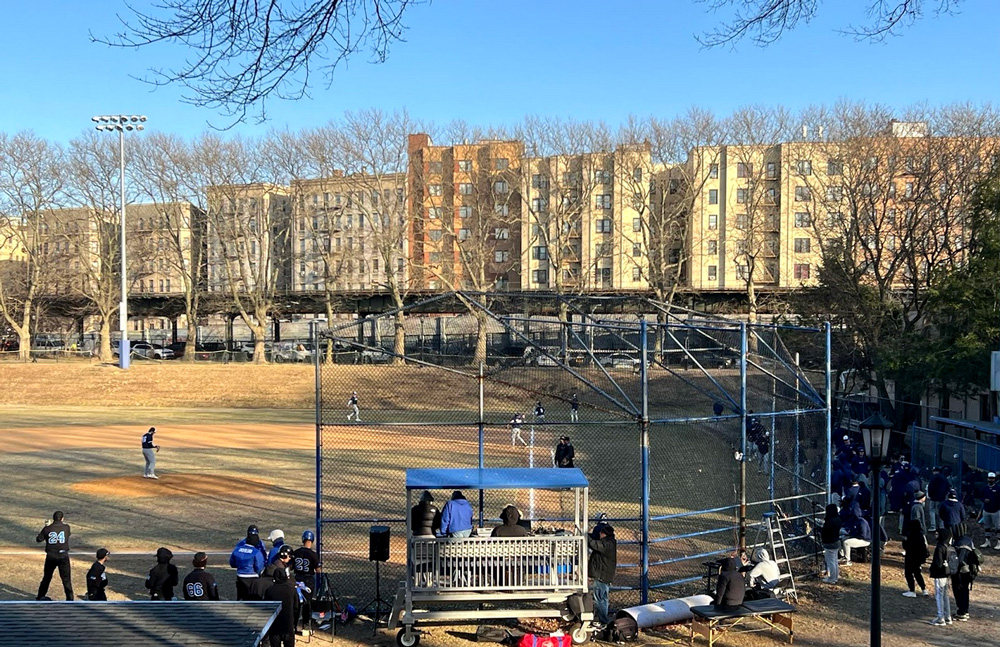
No comments